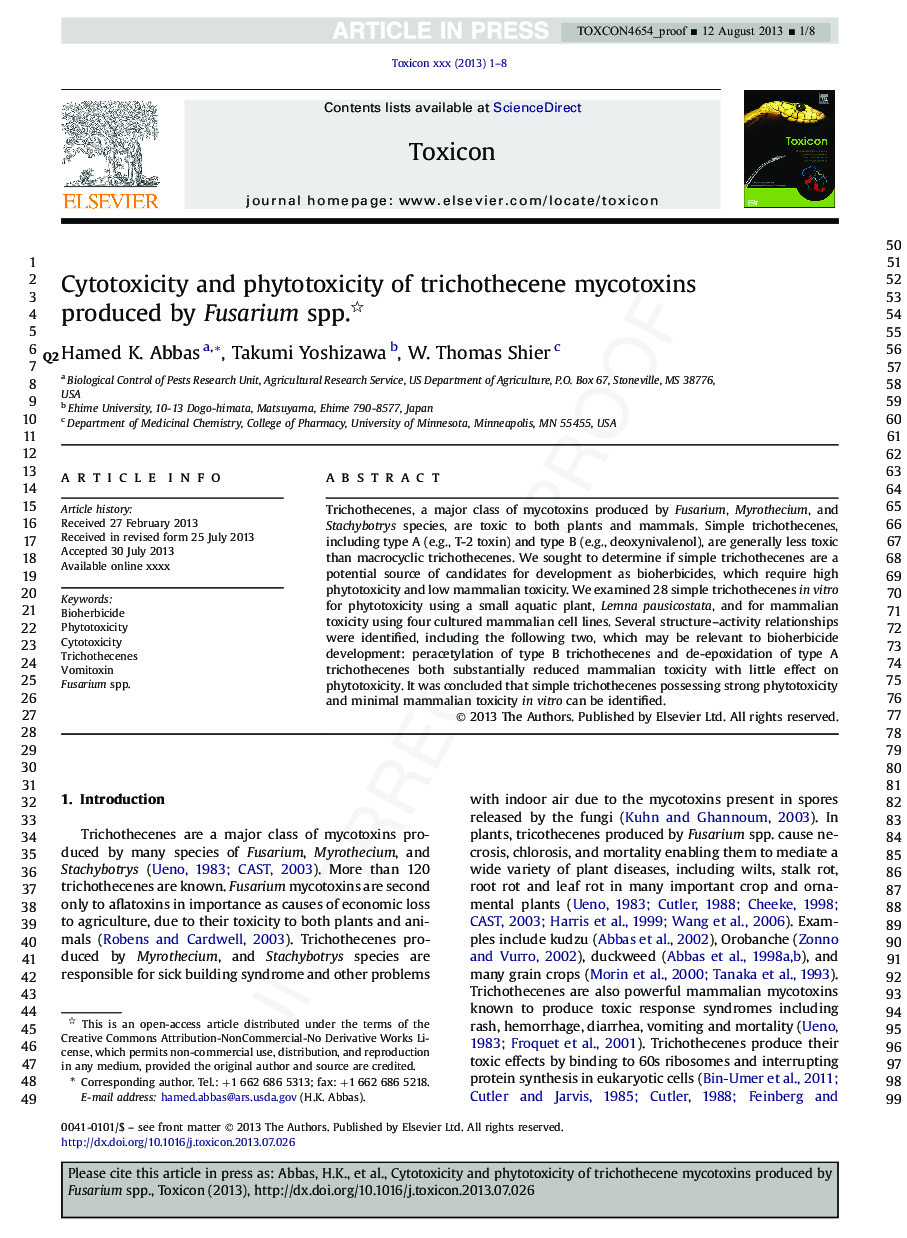| Article ID | Journal | Published Year | Pages | File Type |
|---|---|---|---|---|
| 8397161 | Toxicon | 2013 | 8 Pages |
Abstract
Trichothecenes, a major class of mycotoxins produced by Fusarium, Myrothecium, and Stachybotrys species, are toxic to both plants and mammals. Simple trichothecenes, including type A (e.g., T-2 toxin) and type B (e.g., deoxynivalenol), are generally less toxic than macrocyclic trichothecenes. We sought to determine if simple trichothecenes are a potential source of candidates for development as bioherbicides, which require high phytotoxicity and low mammalian toxicity. We examined 28 simple trichothecenes in vitro for phytotoxicity using a small aquatic plant, Lemna pausicostata, and for mammalian toxicity using four cultured mammalian cell lines. Several structure-activity relationships were identified, including the following two, which may be relevant to bioherbicide development: peracetylation of type B trichothecenes and de-epoxidation of type A trichothecenes both substantially reduced mammalian toxicity with little effect on phytotoxicity. It was concluded that simple trichothecenes possessing strong phytotoxicity and minimal mammalian toxicity in vitro can be identified.
Related Topics
Life Sciences
Biochemistry, Genetics and Molecular Biology
Biochemistry, Genetics and Molecular Biology (General)
Authors
Hamed K. Abbas, Takumi Yoshizawa, W. Thomas Shier,
